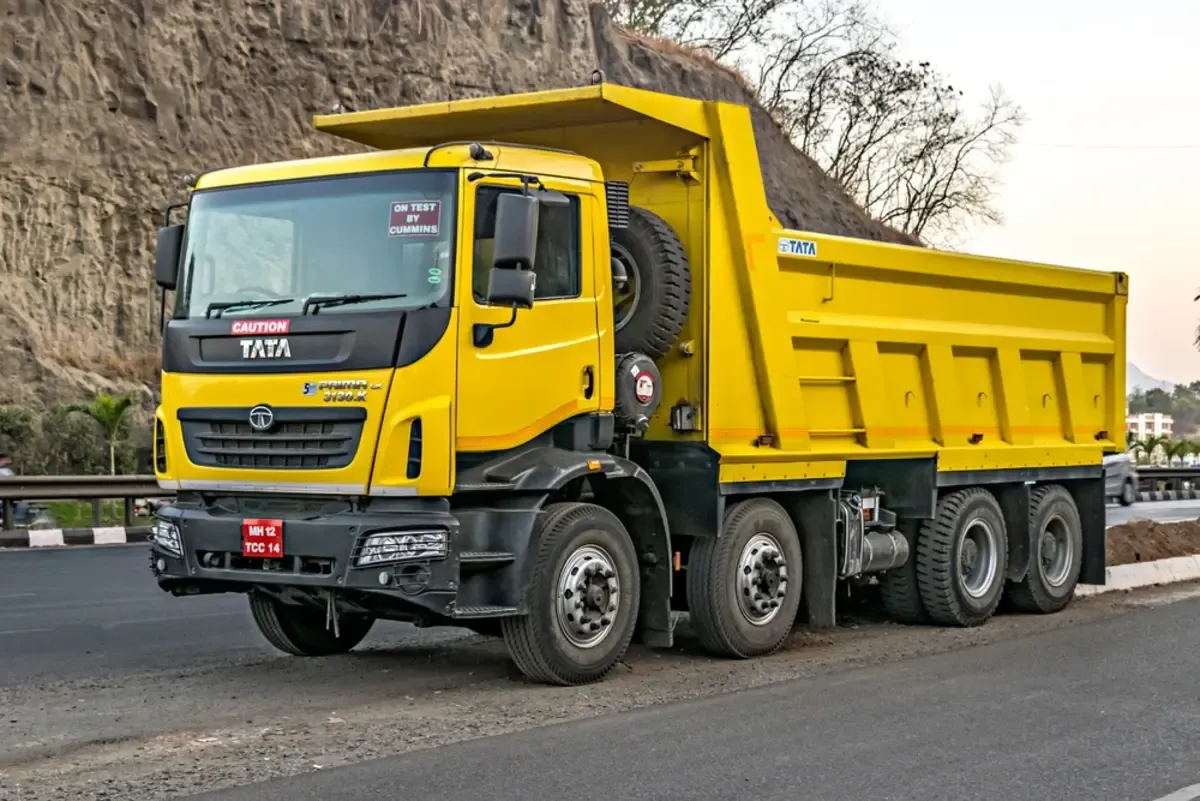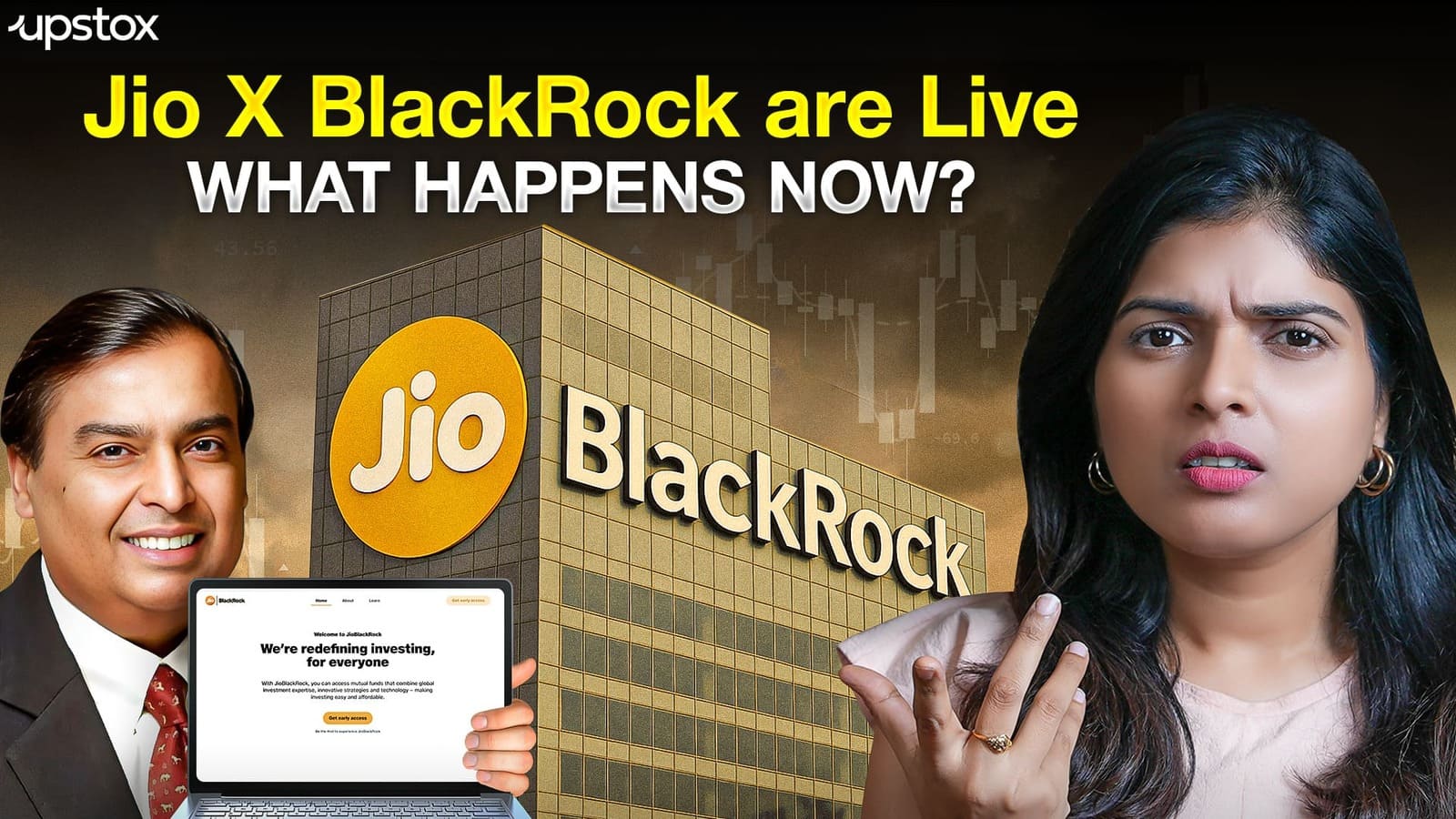Market News
How Tata Motors commercial vehicle stacks up against M&M, Ashok Leyland, Eicher Motors

6 min read | Updated on November 13, 2025, 23:57 IST
SUMMARY
Tata Motors has demerged its passenger and commercial vehicle businesses into two listed entities. Tata Motors’ commercial vehicle (TMCV) made a robust debut listing on November 12 at a premium of over 28%. TMCV competes with automotive giants like M&M, Ashok Leyland, and Eicher Motors. Here is a peer comparison of sales, market share.
Stock list

Tata Motors CV business sold 87,061 units in Q2FY26, reporting sales growth 9% YoY and market share of 33.04%. | Image: Shutterstock
Tata Motors' Commercial Vehicle (CV) business made robust listing on the stock exchanges. The CV business which listed as Tata Motors Limited (TMCV) opened for trading at ₹335 apiece on the NSE, a premium of over 28% compared to its discovered price of ₹260.75.
Experts believe demerger of Tata Motors into two separate entities represents a shift towards creating value for shareholders and better transparency. The solo listing of CV business has put the spotlight on domestic commercial vehicle industry, which is a backbone of India’s infrastructure, logistics, transportation and overall freight economy.
Key details about Tata Motors CV listing
- The demerger was effective from October 1, 2025, which split the CV business (TMCV) and passenger vehicles (TMPV) into two independent listed companies.
- Commercial vehicle division is now referred to as Tata Motors Ltd, with trading ticker "TMCV" and will be dedicated completely to commercial vehicles, including trucks, buses, and associated areas.
- The stock is subject to SEBI's mandated trade-for-trade segment during the first 10 sessions, which will forbid intraday trading in order to maintain stable market activity.
- For every Tata Motors share held on October 14, 2025, the shareholders were allotted one TMCV share and the shares were credited directly to the demat accounts.
- Tata Motors Passenger Vehicles (TMPV) began trading as a separate entity on October 14 2025.
Tata Motors Commercial Vehicles (TMCV) competes with automotive giants in the commercial vehicle segment, like Ashok Leyland, Eicher Motors, and Mahindra & Mahindra.
Domestic CV sales comparison
| Company | Market cap* | YTD FY26 sales | Market share** | P/E ratio | YTD returns (%) |
|---|---|---|---|---|---|
| Tata Motors (TMCV) | ₹1.21 lakh crore | 1,66,633 (▼ 0.5% YoY) | 33.04% | - | - |
| Ashok Leyland | ₹83,556 crore | 1,01,873 (▲ 3.0% YoY) | 18.40% | 25 | 29.28% |
| Eicher Motors | ₹1.88 lakh crore | 39,130 (▲ 5.7% YoY) | 8.81% | 39.0 | 42.66% |
| M&M | ₹4.65 lakh crore | 1,31,058 (▲ 8.4% YoY) | 29.29% | 32.8 | 24.85% |
- *Market cap, YTD return as of 12 November closing
- **Market share as of September 2025
Tata Motors CV business reported robust sales growth in Q2FY26. The company sold 87,061 units across the LCV, MCV and HCV segments, reporting sales growth of 9% YoY and a market share of 33.04% as of Q2FY26. However, the comapny's sales is down marginally on a year-to-date basis. Mahindra & Mahindra (M&M) sold 1.31 lakh units so far in FY26 and its market share stood at 29.29% during the same period.
Ashok Leyland and Eicher Motors sold 1.01 lakh and 39,130 units, respectively, year-to-date, while market share stood at 18.40% and 8.81% for these companies.
In terms of stock performance, Eicher Motors shares outperformed its peers with 42.66% year-to-date (YTD) returns, followed by Ashok Leyland with 29.28% stock return and M&M with 24.85% return. Tata Motors Ltd (TMCV) returns not available yet as the stock has recently made its debut on stock exchanges.
How did CV players perform in Q2FY26?
Tata Motors Ltd reported a net loss of ₹867 crore in the second quarter, mainly due to higher raw material costs and one-time fair value loss incurred from equity investments. Meanwhile, its revenue from operations rose 6% year-on-year (YoY) to ₹18,585 crore.
Ashok Leyland posted flat growth in standalone net profit to ₹771.06 crore during the September quarter. Its revenue from operations rose 9.3% YoY to ₹9,588 crore during the same period. Along with the results, the company declared an interim dividend of ₹1 per share. The record date for the Ashok Leyland dividend is November 18.
Eicher Motors' commercial vehicle division's revenue from operations stood at ₹6,106 crore, up 10.3% YoY from ₹5,538 crore. Profit after tax stood at ₹249 crores as against ₹208 crores last year, while the company recorded sales of 21,901 vehicles in the second quarter, up from 20,774 vehicles last year.
What Tata Motors Ltd management has to say?
The separation of Tata Motors' commercial vehicle (CV) division into a standalone entity has been a revolutionary change that has unlocked the potential of strategic focus and capital efficiency. The new firm, Tata Motors Ltd (TMCV), which is the largest player in the CV sector in India, has secured a better position to take advantage of the market's leadership. The demerger of the businesses allows sharper growth outlook and value creation, supported by increasing domestic sales of 87,061 units in Q2FY26 and new launches like the Ace Pro and Ace Gold that led a 30% YoY surge in September sales.
Tata's CV market share stands at 36.1% as of Q1FY26 in commercial vehicles. The company also pointed out that the replacement of fleet demand is constant, orders from the construction industry and urban freight transportation is getting better. The company's investment in modular platforms, electric vehicles, and digital logistics support has contributed to customer engagement. The management suggested that the focus is going to be on new products, digital services, and using data from the fleet to solve customers' issues.
Industry demand, outlook and challenges
The demand for commercial vehicles in India is on the rise and is dependent on factors like infrastructure development, capital expenditure (capex) growth, and policy changes, etc. With the government maintaining strong fiscal support for infrastructure over the next five years, with an allocation of ₹11.21 lakh crore for capital expenditure in the Union Budget 25-26, which is 3.1% of GDP. This coupling means higher domestic infrastructure spending will also boost demand for commercial vehicles. Besides this, the recent reduction in GST from 28% to 18% is also likely to increase demand.
The National Logistics Policy, along with the emphasis on digitisation and fleet management solutions, has opened the door for efficiency gains and support for commercial vehicles in the future economic growth story of India.
Although the scenario is promising, Tata Motors and the whole CV industry is also facing major issues. The increasing cost of inputs, the enforcement of stricter emissions regulations (BS-VI Phase 2) are affecting margins and capital allocation. Also, demand remains inconsistent amid a number of factors, like macroeconomic cycles, volatility of fuel prices, regulatory changes, and global supply chain disruptions.
Q2FY26 quarter faced headwinds due to the monsoon, and cautious sentiment ahead of the GST 2.0 rollout. However, the onset of the festive season and lower GST rates from late September brought a good recovery in sales, bookings, and sentiment for Tata Motors Ltd and other listed CV players. The industry anticipates a strong second half for FY26 on the back of the festive season, improving construction activity and the total impact of GST reforms.
About The Author
Next Story

